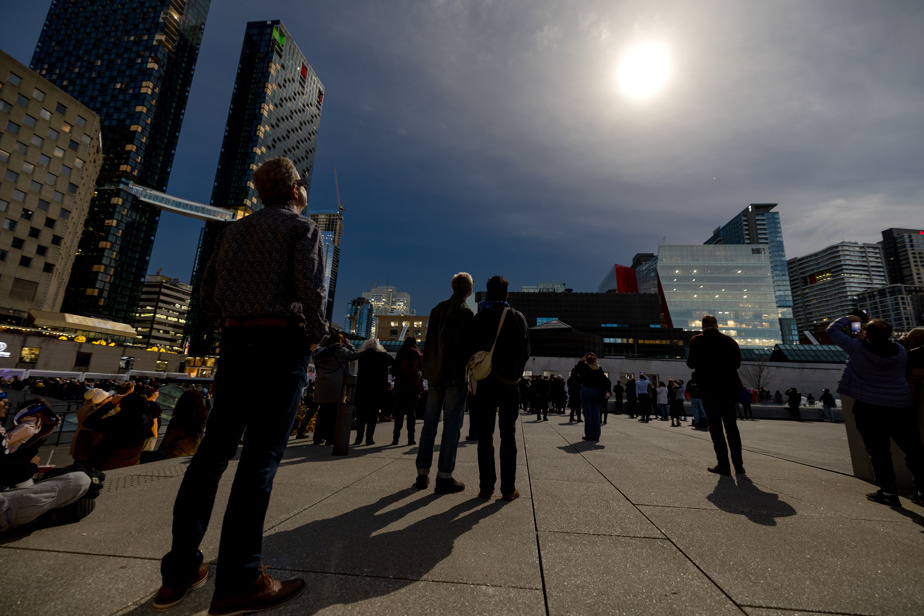Three cases of retinal burns and three other cases of corneal burns were confirmed following the total solar eclipse in April, according to the Association des médecins ophtalmologistes du Québec (AMOQ).
There are also three other suspected cases of corneal burns, but these have not been confirmed.
The AMOQ collected this data by conducting a survey of ophthalmologists, who responded voluntarily between April 9 and 24.
The association warns that the data may have been an underestimate, but it believes the tiny number of cases demonstrates the success of the awareness campaign deployed in view of the April 8 eclipse.
According to her, these efforts have “helped reduce eye damage among the population.”
“However, these results demonstrate that the risks associated with observing such a phenomenon without protection are very real, while the visual effects of solar retinopathy (burning of the retina) can be permanent and irreversible,” stressed Dr. Cynthia Qian, spokesperson for the AMOQ and ophthalmologist specializing in retina at CHU Sainte-Justine and Hôpital Maisonneuve-Rosemont.
In total, the association recorded 18 consultations at eclipse-related clinics. The average age of these patients was 38, and the most common symptoms were pain or discomfort in the eyes and blurred vision.
Of these 18 patients, 40% admitted that they had not worn certified glasses to observe the phenomenon.
“This data is particularly evocative, since it demonstrates the need for even more prevention in terms of eye health, particularly among more vulnerable populations, on the fringes of events such as eclipses,” stressed Dr. Qian.
